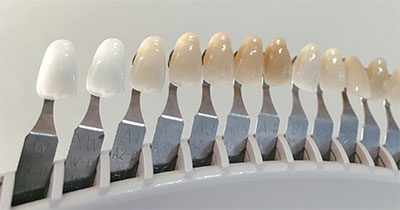
Much like porcelain veneers, composite veneers and bonding can be used to improve the appearance and/or shape of front teeth.
They are an alternative option to porcelain veneers, and involve the use of white (resin composite) filling material which may require less shaping of the teeth.
Bonding can be used to change small irregularities and imperfections, such as chips or gaps in the teeth. They often require minimal or no shaping of the teeth. The material is bonded to the tooth after a special chemical treatment and bonding procedure.
Composite veneers are a thin layer of white filling material, which is bonded against the front surface of the teeth. They are then polished and shaped to look like your natural tooth.
If you are unhappy with the current colour (shade) of your natural teeth, we may recommend whitening (bleaching) your teeth prior to composite veneers and bonding, to ensure that we can match the colour of the veneers to the rest of the teeth in your mouth.
To ensure your composite veneers or bonding stay in good condition, they need to be checked regularly. Over time, stains may form around the join line between the tooth and the veneer. New and superficial stains are easier to remove than old and deep stains. It is also important to ensure that the gum health around the teeth with composite veneers or bonding remain optimal. If gum disease develops, shrinkage of the gums may result in the root surface becoming visible, which is often a more yellowish colour.
